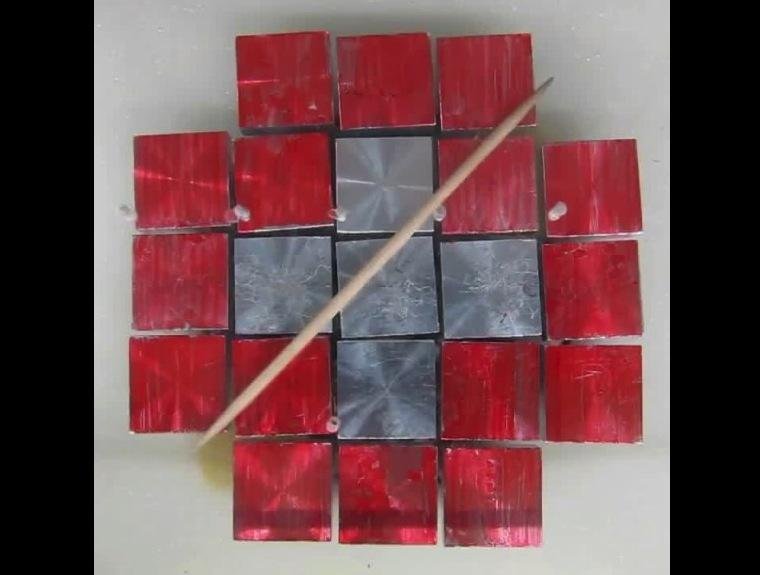Each square on this board emits sound, which scientists use to levitate and move objects in midair. (Credit Daniele Foresti, Dimos Poulikakos et al.)
Scientists have been able to use the power of sound to levitate small items — including insects and fish — for decades. But now researchers from Switzerland have figured out how to move objects around in midair.
Dimos Poulikakos and his team at ETH Zurich, a science and technology university in Switzerland performed a number of midair experiments and published their findings in Proceedings of the National Academy of Sciences.
They combined water droplets and chemical solutions, inserted DNA into cells and even made a few drops of instant coffee.
They were also able to levitate a wooden toothpick, which had never been done before, and proceeded to rotate and move it forward and backward.
Sound waves exert pressure on surfaces, but the effects are usually insignificant. At a high enough intensity, however, sound is able counteract the effects of gravity.
Poulikakos and his colleagues had to use about 160 decibels -- louder than standing next to a rocket launch, and enough to rupture a human eardrum.
But researchers used a frequency of 24,000 hertz (Hz), a level similar to a dog whistle, and so they were unaffected by the noise. The upper range of human hearing is about 20,000 Hz.
Their levitation device looks like a checkered board, with each square emitting its own sound. A plastic plate above the chessboard reflects the sound; if the sounds waves are strong enough, objects can hover and move around between the board and the plate.
Daniele Foresti, also a mechanical engineer at ETH Zurich, said the difficult part was learning how to move things from square to square carefully, without damaging them. He found that lowering the sound intensity of the "giving" square while increasing that of the "receiving" square maintained balance.
This advance in mobility during levitation could be useful in the pharmaceutical industry, allowing scientists to mix solutions in midair without contamination from a container.
For now, scientists will be limited to small, lightweight objects, though Poulikakos plans to release new results with heavier and more dense objects, including steel balls.















